Pirates Of The Caribbean - Much More Than Just A Movie!
You might be surprised to learn that the Caribbean’s pirate history runs much deeper than Hollywood’s take. Sure, the Pirates of the Caribbean movies were wildly popular, but they barely scratch the surface of the region’s swashbuckling past. Think of them as the trailer, not the full feature.
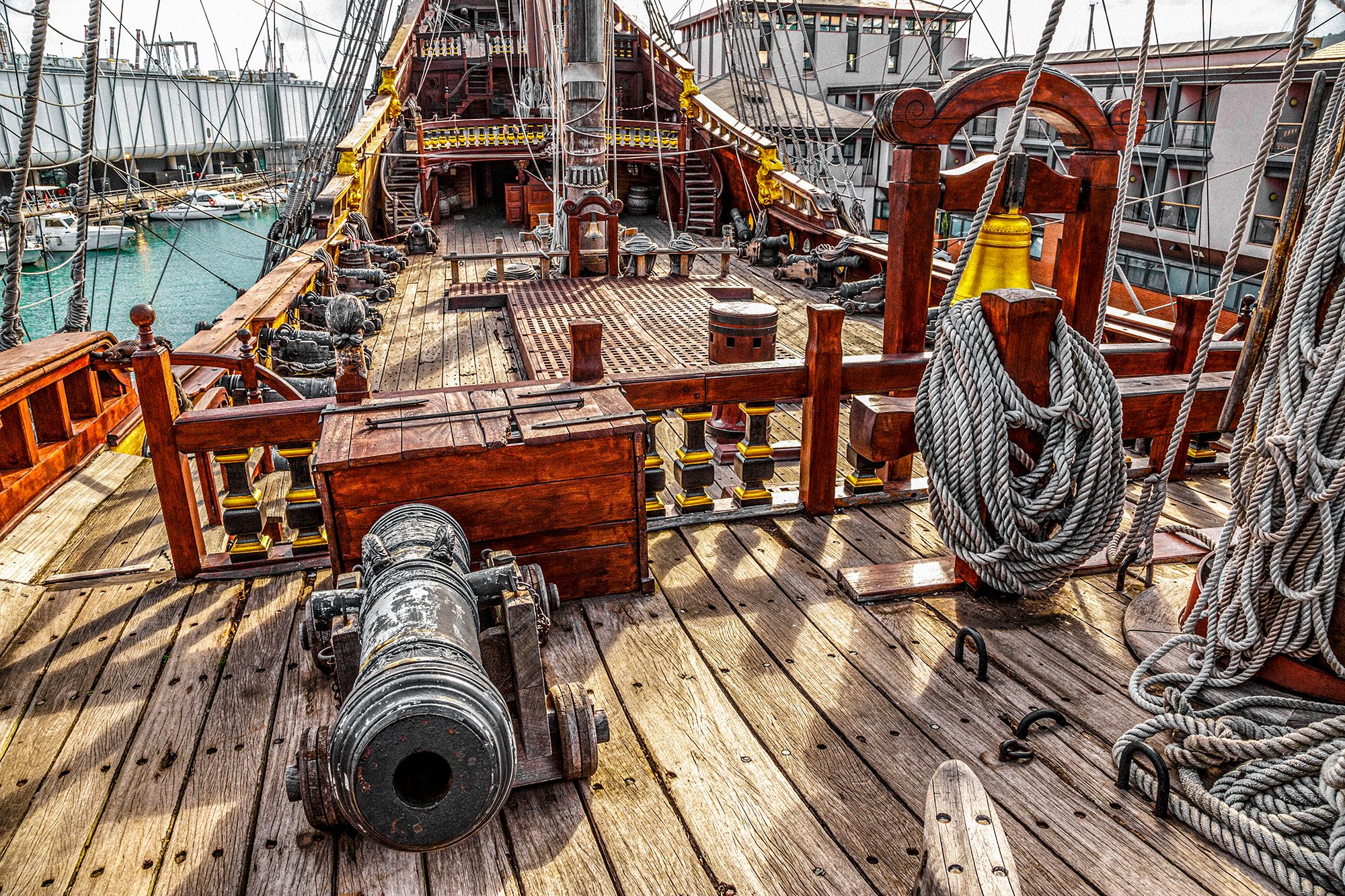
Back in the late 16th and 17th centuries, the Caribbean was crawling with pirates, especially around Jamaica and The Bahamas. With its maze of islands and secret bays, the region was a prime hideout for plunderers. Plus, with all the gold, silver, tobacco, sugar, and more moving around, there was plenty of booty to go around.
Pirate life was lucrative during its golden age (though we can’t promise it came with a catchy theme song). In this article, we’ll dive into the fascinating history of Caribbean piracy, spotlight some of its most infamous characters, and point you to a few places where you can walk the plank into the real world of the pirates of the Caribbean.
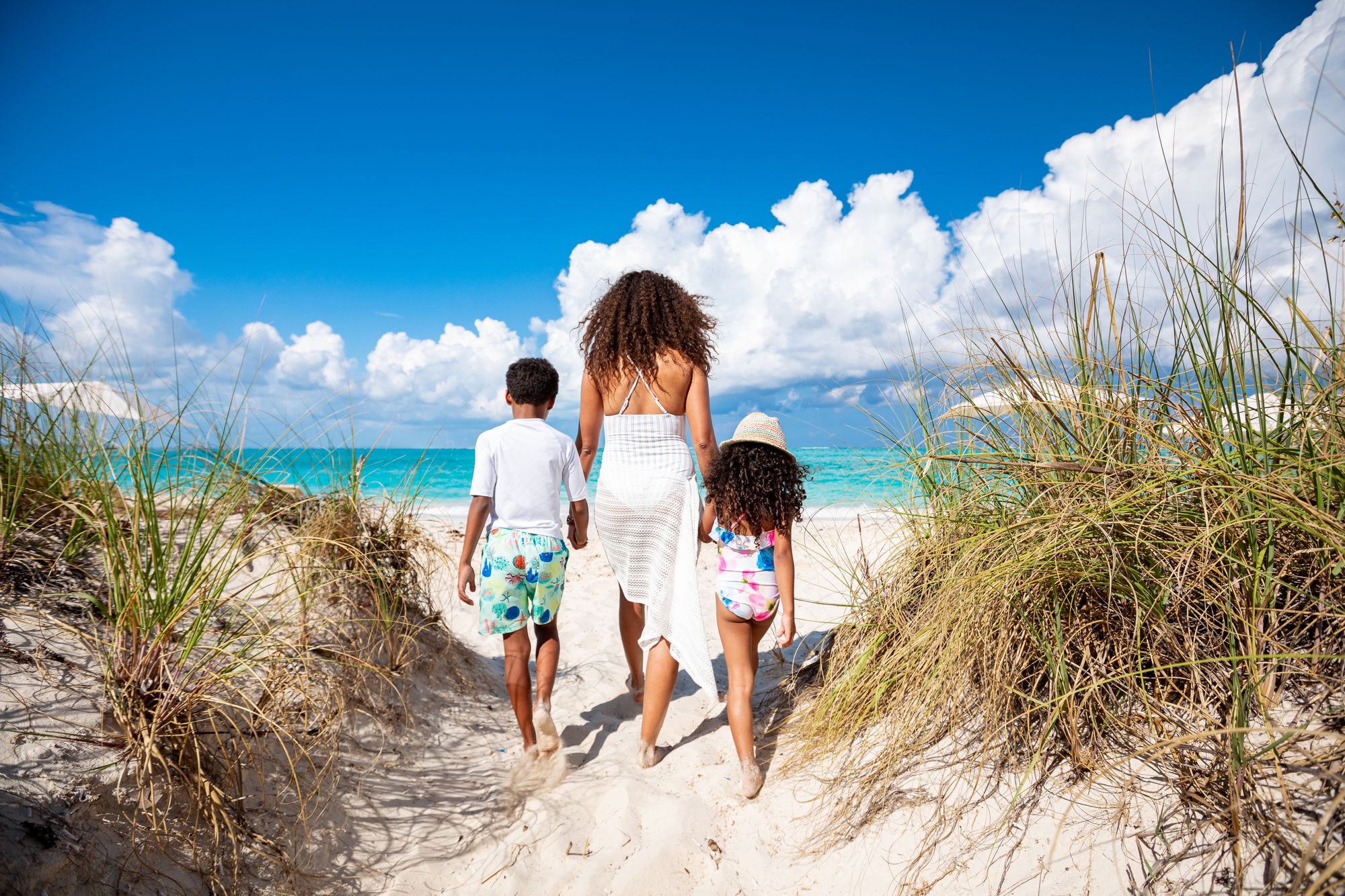
Picture: There are many incredible locations in the Caribbean where you can learn about the pirate history of the islands. The best part? You can take it all in while embracing the warmth and beauty of this destination with enticing all-inclusive deals!
A brief history of real pirates of the Caribbean
Now let's get into some pirate history. The pirates of the Caribbean were a menace to sea farers and preyed on ships and relieved them of their bounty. Very often, pirate attacks were carried out in violent ways. Many of the pirates who sailed the seas of the Caribbean, and elsewhere, were said to have been soldiers or merchants at one time or another. In many cases, these were men and women who went off the ‘conventional’ path after having their previous careers end in less than favorable ways. Some say these included people who had been cast aside or abandoned by their governments. These people would be required to find a new way of life. Based on the history, it seems as though many of these people felt as though the pirate life was their only real option.
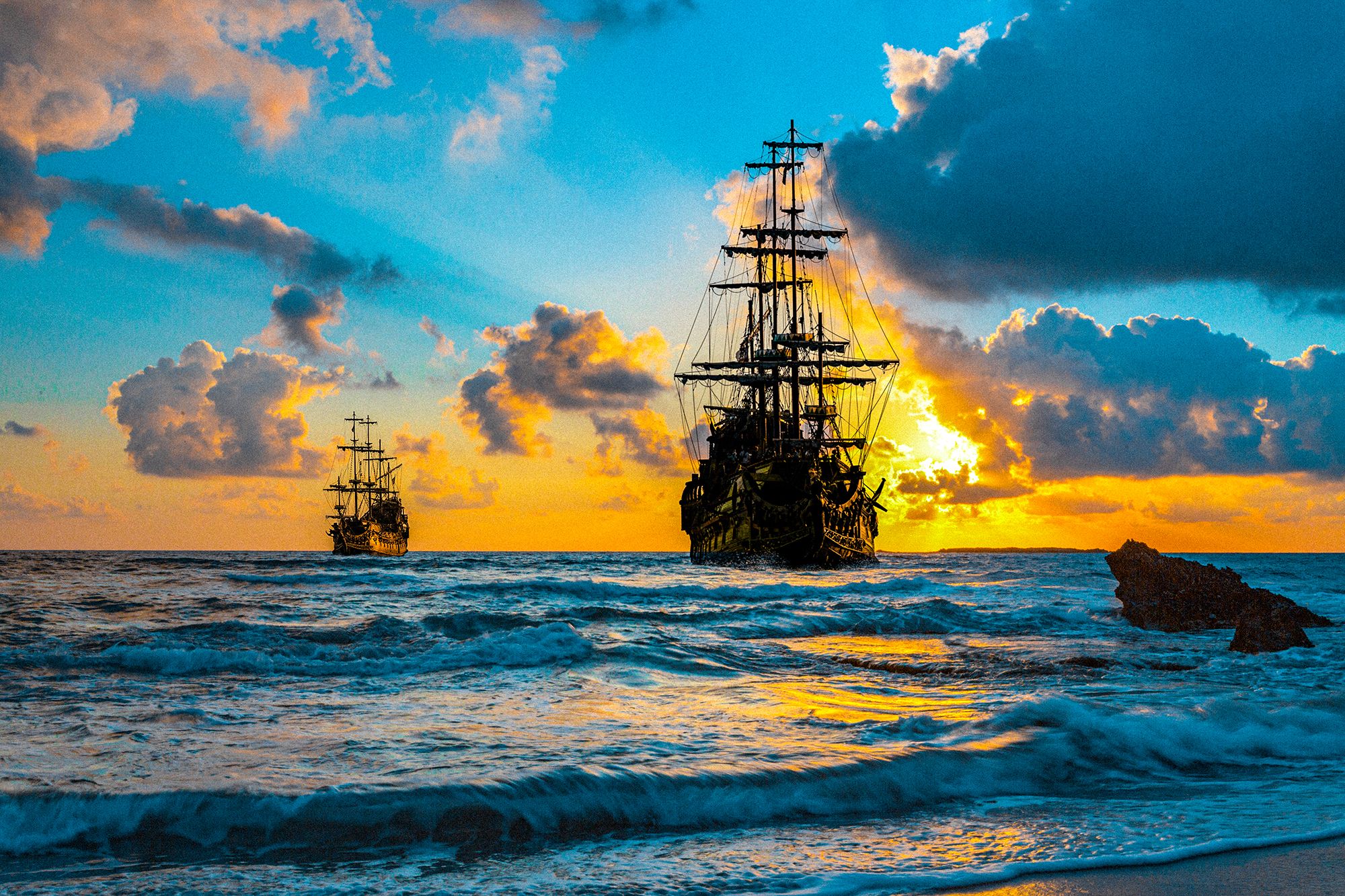
The age of piracy lasted around 80 years from 1650 to 1730. Some of the islands that were famously inhabited by pirates include New Providence in The Bahamas and Jamaica. Nassau, the capital city of The Bahamas and the main settlement on the island of New Providence, became the epitome of a pirate haven, around 1715. Many of the pirate crews who ended up in Nassau were fleeing from more unfriendly ports, which had become rather inconvenient for them.
At the height of piracy in the islands, the Royal Navy, the United Kingdom’s fleet of military ships, had just a few vessels in the Caribbean. In fact, there were only two of them stationed there in 1670, despite the fact that the Caribbean comprised mostly British colonies. By the year 1718, this number had increased to 124, making it harder for piracy to thrive. That was the point where the Royal Navy intervened and pursued pirates, bringing the ones they could find to justice. The punishment handed out to captured pirates was swift, but we’ll touch on that later as we explore the lives of some of the most famous pirates of the Caribbean.
Fun fact: Henry Every was considered the world’s most successful pirate! Dubbed “The King of Pirates” by those that have studied his exploits, he is not as well-known as some of the more popular names, but his successes are said to have lured many men into the world of piracy.

Picture: Once known for being a famous pirate port, The Bahamas is now more famous for all-inclusive escapes that include just as much serenity and excitement as you'd expect in the islands!
The King’s Pardon
Before we dig into the backstories of the most famous pirates of the Caribbean, it will help to know about the King’s Pardon, which largely marked the end of piracy’s 80-year era. The King’s Pardon was introduced in 1718 when Woodes Rogers was appointed the first Royal Governor of The Bahamas. On January 5, 1718, Woodes issued a proclamation offering clemency for all piratical offenses. This became known as the King’s Pardon and required pirates to surrender by September 5th of 1718. Anyone who did not surrender before that time would be hunted down and hanged.
Now onto the famous pirates of the Caribbean…
There were many famous Caribbean pirates. A few of the more recognizable include the notorious Blackbeard, Calico Jack, Red Legs, and more. Read on for some fascinating facts about ten pirates of the Caribbean that live on in infamy:
1. Edward Teach aka ‘Blackbeard’
Fearsome, bold, and ruthless, Blackbeard is about as famous as pirates come. He was born in Bristol, England in 1680, and was given the name Edward Teach. Although he had inherited his late father’s estate, he gave it up to his mother and siblings. He had set his sights on something else entirely — joining the navy. He wanted to sail and might have also had a particular interest in the wealth of Jamaica.
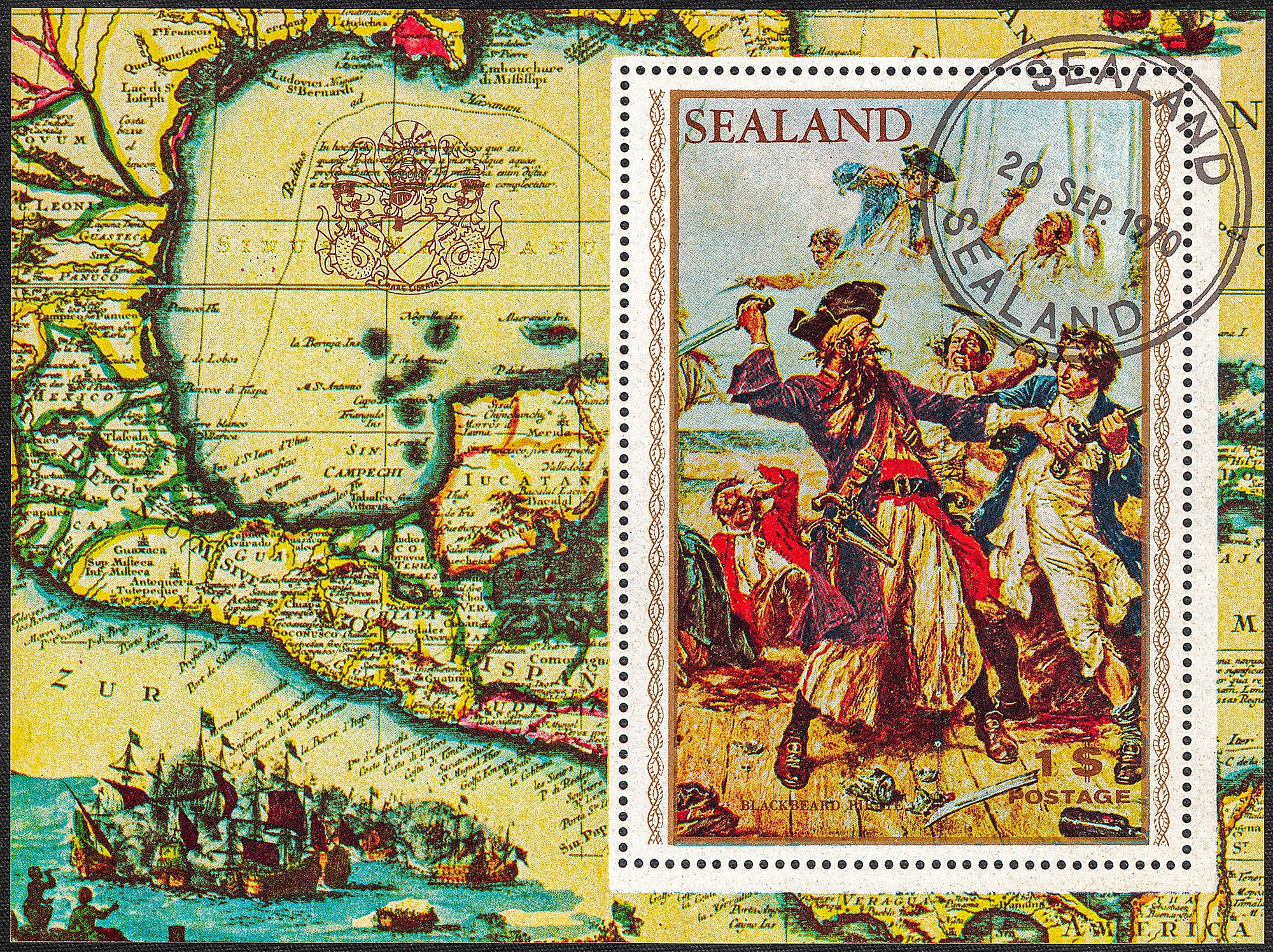
After joining the navy, Teach gradually transitioned from a naval officer to a pirate. It was not long before he and fellow pirates captured the French slave ship known as La Concorde. Teach made the ship into his own, naming it ‘Queen Anne’s Revenge’, and proceeded to dominate the Caribbean Sea during the pirate era using the moniker of Blackbeard.
Blackbeard was feared by pirates, naval men, and civilians alike. During battles, he had a habit of putting lit matches under his hat and in his beard to make it look like his head was on fire. A scary sight indeed! On the other hand, Blackbeard was surprisingly refined. He had commissioned a chef from France to prepare all his meals aboard the Queen Anne’s Revenge. He loved food and was also an avid reader.
In the early 1700s, by popular pirate vote, Blackbeard was appointed as Magistrate of Pirate’s Republic on the island of New Providence, which was a major pirate hub at this time. This new title effectively made Blackbeard the head of the pirates of the Caribbean. However, in 1718, the year that the British empire really started to crack down on piracy, a military force led by Lt. Robert Maynard targeted Blackbeard. Blackbeard was lured into attacking Maynard’s ship and he was killed in the battle that ensued.
2. Jack Rackham aka ‘Calico Jack’
Born in England around 1682, Jack Rackham (also known as Calico Jack) came onto the pirate scene during its golden age. He worked as a court master for Charles Vane’s crew and stood out for his brightly colored clothing made with Indian calico cloth. Calico Jack was also one of the few pirates known to fight alongside women. His companions included the courageous Anne Bonney and Mary Read.
Initially, Charles Vane and Calico Jack were among the pirates who did not support the King’s Pardon. In fact, they coordinated many attacks and caused chaos when Woodes Rogers came to the islands to try to convince the pirates to surrender. Eventually, after a failed attack on a French warship, the crew elected Calico Jack to replace Charles Vane as their captain. However, after several successes and failures, Calico Jack and his crew eventually gave up and returned to Nassau. There, they convinced Rogers to extend the deadline for surrender, blaming their extended time at sea on Charles Vane. He and his crew were pardoned in 1719.
Later, Calico Jack met and fell in love with Anne Bonny. She was already married to former pirate John Bonny, one of Woodes’ informants. Calico Jack and Anne tried to convince John Bonny to let Anne go in exchange for money, but he declined. So, in August 1720, the two lovers, along with a few other ex-pirates, stole a ship and went back to sea. Their return to piracy was short-lived, however, and a bounty was placed on their heads. Not long after, they were attacked by bounty hunters in Negril, Jamaica, who captured Calico Jack and his crew. He was tried and hanged later that same year.
3. Anne Bonny aka Anne Bonney
One of the most fearless pirates of the Caribbean was actually a woman known as Anne Bonny. Before she became the wife of a former pirate-turned-informant in The Bahamas, Bonny had an interesting life back in Ireland. She was said to have been the daughter of a prosperous lawyer, and that is something that would also come into play at the end of her pirate reign.
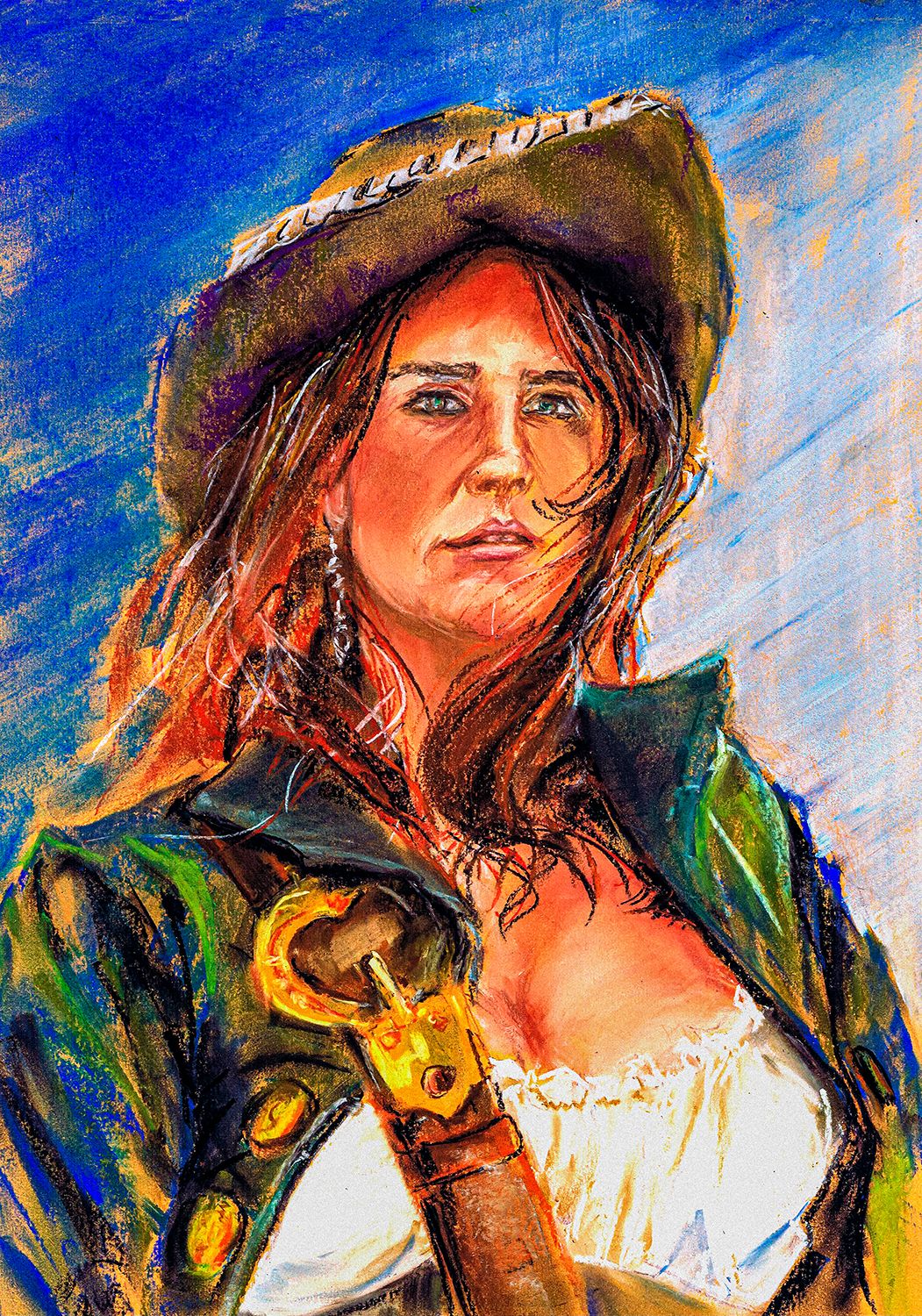
As the story goes, Bonny fell in love with the rugged Jack Rackham (also known as Calico Jack) while she was still married to another man. Her husband would not consent to sell her off, so Bonny ran away with Rackham. Together, they formed a new pirate crew.
Rackham had recently been pardoned for piracy crimes, but with Anne Bonny by his side, he went back to pillaging the high seas and didn’t look back. Bonny was said to have been seen fighting alongside Rackham and his crew during their short-lived return to the sea. She was reportedly a great swordsman and one of the few female pirates who fought openly.
Soon after Rackham was executed in 1720, Anne disappeared. She had initially gotten off the hook by ‘pleading the belly’ (claiming to be pregnant to avoid prosecution). Since pregnant women could not be hanged, Anne received a reprieve from execution until after her baby was born. To date, there is no record of her being executed. There is speculation that she may have escaped or been released thanks to a bribe from her wealthy father. All we know is that she was alive up until at least 1782. Bonny was also said to have ties to both Blackbeard and Black Bart.
4. Mary Read
Mary Read was another female pirate, a truly rare designation. While the circumstances of her childhood are not clear, Read’s mother was believed to have been married to a sailor who went missing at sea. After the death of the firstborn son she had with her husband, Read’s mother had an affair, became pregnant, and gave birth to her in 1685. Read’s mother is said to have disguised her as a boy so she could continue to get financial support from her mother-in-law (who believed Read to be her deceased grandson). Before she turned to a life on the sea, Mary Read worked as a footboy to help support her family.

Once she was old enough, Read joined the British military, marking her introduction to life aboard a ship. Eventually, she fell in love with another soldier, they got married and opened an inn together. After her husband died, however, Read fell right back into her male character and hopped on a ship to the Caribbean. It just so happened that the ship she was on was attacked by Calico Jack!
All the British men aboard (including Mary who was dressed as a man) were inducted into Calico Jack’s pirate crew. Anne Bonny was also aboard Calico Jack’s ship, so she and Read became friends. Originally, Calico Jack believed Read to be a man and grew jealous of her relationship with Bonny. Read later revealed she was in fact a woman and from then on fought openly as a woman.
Mary Read’s life of piracy was brought to an end when she was captured by pirate hunter Johnathan Barnet, along with Calico Jack and Anne Bonny. Both she and Bonny claimed to be pregnant to avoid execution, however, Mary is said to have died of a fever shortly after going to prison.
5. Bartholomew Roberts aka ‘Black Bart’
Black Bart stood out most among the other pirates of his time because of his style. He would often wear scarlet britches, and was seen frequently wearing a waist sash, an overcoat, a ‘pirate hat’, and a gold chain with a diamond-encrusted cross. He was so fashionable, in fact, that he is credited for having influenced Hollywood pirate attire, including the wardrobe of famous on-screen pirates like Jack Sparrow. Still, there was much more to Black Bart than just cool threads.
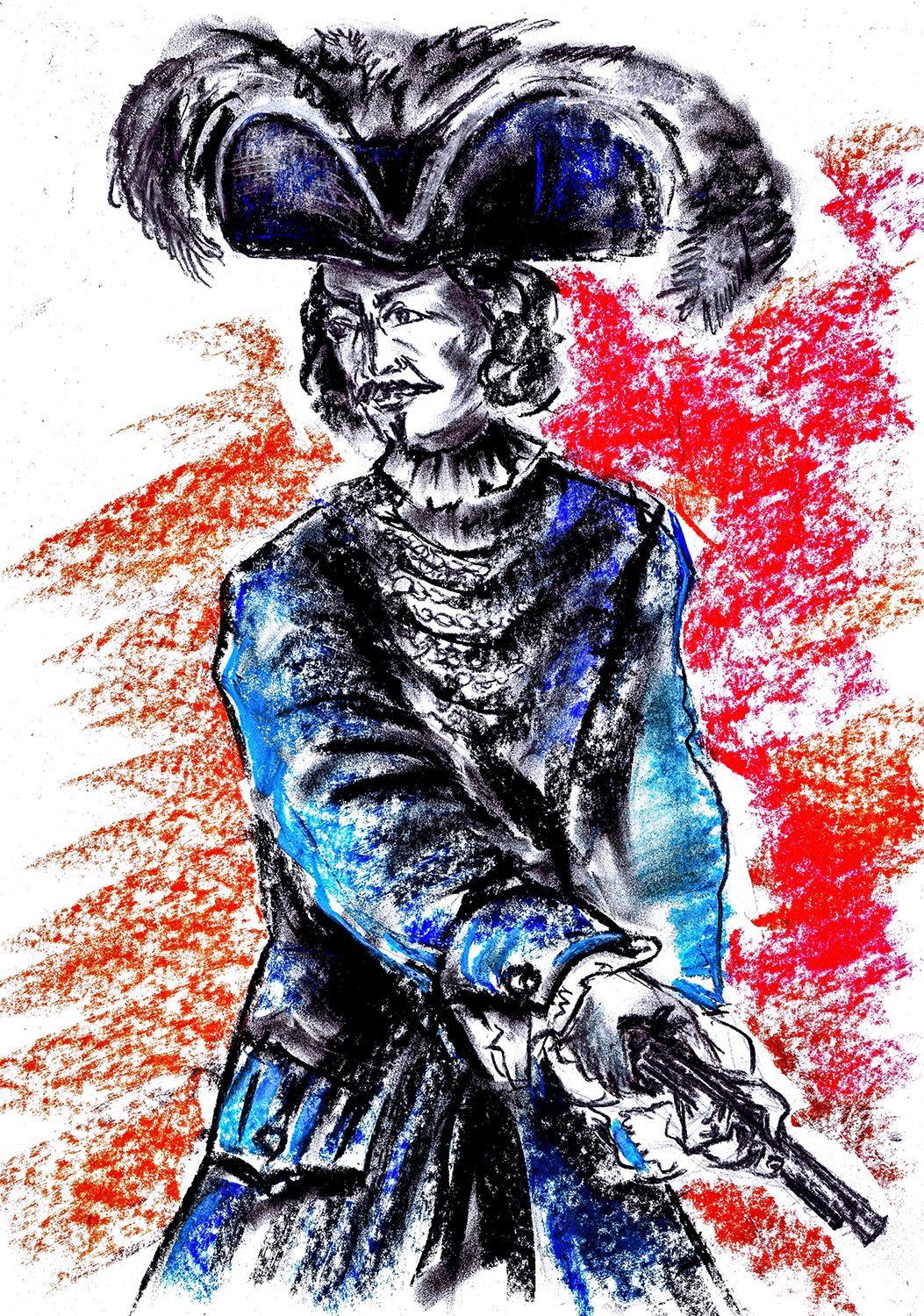
This pirate was born Bartholomew Roberts in the early 1680s in South Wales. He was introduced to the Caribbean as a third mate on a slave ship. When pirate Howell David took command of the ship in 1719, Roberts was forced to continue working on board. He became intrigued by pirate life and quickly took to the lifestyle. Soon, he saw his chance to become captain of the vessel when David was attacked and killed.
Black Bart had many successes out on the open waters. In fact, he was said to have nearly stalled transatlantic shipping altogether at one point! In 1722, he met his demise, after being tricked by a British warship that disguised its intentions by flying French colors. He wished to never be captured, in life nor death, and his crew fulfilled this request by casting him overboard.
6. Jean-David Nau aka François L’Olonnais
Jean-David Nau had a reputation for being quite the savage. This pirate, born in France sometime between 1630 and 1635, was more commonly known as François L’Olonnais. At 15, he was sold by his parents and shipped off to Martinique as an indentured servant. He worked on a sugar plantation in Martinique before moving to Hispaniola (the island on which Haiti and the Dominican Republic are found) where he toiled on another plantation. By the late 1650s, he had earned his freedom from indentured servitude.
L’Olonnais opted not to become a farmer as many in his position did. He chose, instead, to join the Buccaneers. L’Olonnais started out as a mariner, but he was later given command of his own ship after having found favor with the French Governor of Tortuga Monsieur de la Place. Being in charge was something new for L’Olonnais, and from early on he was encouraged to attack Spanish ships.
He proved to be ruthless and blood-thirsty, and eventually secured a fleet of 8 ships and 400 men. Together, he and his crew seized the towns of Gibraltar and Maracaibo in the Gulf of Venezuela. Most of the spoils went to Tortuga’s tavern keepers. Sadly, the story of François L’Olonnais ended when his crew mutinied, leaving him with only one ship that ran aground off Las Petras Islands. He was later captured and killed by locals while trying to find a new crew.
7. “Red Legs” Greaves
“Red Legs” Greaves was born on the island of Barbados to Scottish slaves. From beginning to end, his story is full of unbelievable events. He actually became a pirate by accident after stowing away on a pirate ship and being forced to join the crew. Things heated up for Greaves pretty quickly! When the captain of the ship ordered Greaves to torture a prisoner, he refused. After he was reprimanded by the captain, a fight broke out between the men. Greaves wound up killing the captain and was immediately elected as his replacement.
Rather than exhibiting the rogue and uncaring nature many pirates were known for, Greaves stood out for being more humane, and even moral. He made a point of sparing his prisoners from torture and also refused to rob the poor or abuse women. After sailing the seas and making a small fortune, he retired. He traveled to the island of Nevis, where he became a plantation owner.
Later, he was identified by a victim of his piracy who turned him in. Although he was sentenced to hang, things took a dramatic turn. While he was in prison awaiting his execution, a massive earthquake ravaged the island. Greaves survived while many others did not. He was rescued by a whaling vessel, became a pirate hunter, and was later pardoned for his crimes of piracy. He died peacefully of old age, a rarity for pirates indeed!
8. Henry Jennings
Henry Jennings started off as a legitimate privateer. Before that, he is said to have grown up on the island of Bermuda, where he received a quality education and lived on a wealthy estate. His family had lived on that island since 1635.
After operating for a while as a privateer, Jennings transitioned to the role of pirate around 1715. He eventually became one of the most powerful pirates of The Bahamas. One of Jennings’ biggest hauls came just after a Spanish fleet sunk off the coast of Florida. He laid in wait as Spaniards recovered the gold and silver from the sunken ship, and then attacked, making off with the valuable bounty.
Faced with the threat of being hanged by the Governor of Jamaica as punishment for his piracy, Jennings escaped to Nassau, Bahamas. He became Nassau’s unofficial mayor and played a huge role in developing the city into the pirate haven it later became. There were so many pirates in this area at one point that many ship farers simply avoided it entirely.
In the year 1718, when the King’s Pardon was introduced, Jennings accepted with no hesitation, since he had already secured more than enough money to live comfortably for the rest of his life. He spent his last days living peacefully on his plantation.
9. Charles Vane
A master of the sails and a notably cautious pirate, Charles Vane was notorious in the pirate world. He was born in England around 1680 and got into pirate life around 1716. He started off as a crew member under Henry Jennings, and just two years later, became the captain of his own crew. Vane was fearless, captured many ships, and took lots of prisoners. Through this strategy, he quickly rose through the ranks of pirate infamy.
Vane was one of few pirates who did not accept the King’s Pardon as offered by Woodes Rogers. At one point when Rogers’ ships tried to capture Vane, he set a captured vessel on fire and sent it barreling toward Rogers’ fleet! As the flaming ship somehow continued sailing toward Rogers’ ships, Vane made his escape, reportedly laughing all the way in true bandit style.
It is believed that Vane sailed to the Carolinas after that, continuing on with his pirate lifestyle. Before long, he was captured and returned to Port Royal. A trial followed, after which he was found guilty and hanged in November 1720.
10. Captain Henry Morgan
Captain Henry Morgan is a well-known Caribbean pirate who was born in Wales around 1635. It is unclear how he found himself in Jamaica, but he arrived there in 1655. There were already pirates prowling the seas around Jamaica by this time. Morgan started out as a privateer whose job was to raid and attack Spanish ships. Privateers engaged in this activity with the authorization of the British government and were actually allowed to keep some of their gains for themselves. So, piracy … but legal!

Shortly after becoming a privateer in Jamaica, Morgan was promoted to Vice-Admiral on the Jamaican fleet. In his new position, he successfully raided and captured the towns of Puerto Bello and Maracaibo. One of the most memorable attacks led by Captain Henry Morgan was the capture of Panama that took place around 1670. This was no easy battle, yet Captain Morgan and his team emerged victoriously.
The odd thing about the battle for Panama was that it happened during a time when England, who sanctioned Morgan’s activities, and Spain, who controlled Panama at the time, were not at war. Though Morgan was unaware of it at the time, this meant he had breached the permissions of his rather fragile privateering contract. He’d now committed an act of piracy! Once he returned to Jamaica, he was charged as a pirate and ordered back to England to be tried.
Thanks to Captain Morgan’s connections to the powerful and influential, he was able to avoid the charges he should have received. In fact, he was instead honored by the King, and promoted to the deputy governor of Jamaica! The rest of his life was spent peacefully living on a large plantation with his wife until he died in 1688.
Fun fact: The fictional pirate character Jack Sparrow was inspired by a real-life pirate known as John Ward. There were many similarities between the two, including their flamboyant fashion.
Bonus: The best places to learn about the real pirates of the Caribbean
Bloody Bay in Negril, Jamaica
Hands down, Bloody Bay is one of the best beaches in Jamaica. This strand has a whaling history that influenced its name, but the area has built up a new reputation in more recent times. It's an incredible place to dive in Jamaica, whether you want to scuba dive or go snorkeling. Bloody Bay is on the north end of Seven Mile Beach.

In terms of pirates, Bloody Bay was said to be a playground for names like Calico Jack, Anne Bonny, and Mary Read. In fact, as the legend goes, this infamous team of pirates was captured in Bloody Bay after drinking to the point of intoxication in defeat.
Expert tip: Bloody Bay is one of the most scenic beaches in Jamaica. To spend time on these shores during your vacation, look to the all-inclusive resorts on Seven Mile Beach. Explore to your heart's content and wind down with exceptional sunset views!
Fort Charles in Port Royal, Jamaica
Port Royal was one of the most famous pirate cities in the Caribbean. It was also one of the largest cities in the region during its heyday. Though the city was partially submerged and badly damaged by earthquakes in 1692 and 1907, the first fort to be erected there, Fort Charles, still stands today. This boat-shaped fort was built by the British in 1655. It now houses a maritime museum in the courtyard where you can view archaeological artifacts recovered from the sunken pirate city.

It takes about one hour and 30 minutes to get to Port Royal from Ocho Rios. It can take longer to get there from areas like Montego Bay and Negril. If you want to visit Port Royal while in Jamaica, it is a good idea to stay at one of the all-inclusive resorts in Ocho Rios. While there, you can also check out lots of other nearby attractions like Dunn’s River Falls. You can get to Port Royal by public bus, taxi, or car rental for a taste of Jamaican history.
Expert Tip: If you'll be spending your island vacation in Jamaica, check out some of the best golf courses in Jamaica while you’re on the island!
Firefly (Noël Coward’s Home) in Ocho Rios, Jamaica
Playwright, composer, and actor Noël Coward’s former vacation home is open for tours in Jamaica. Known as Firefly, this attraction has an interesting pirate history. Captain Henry Morgan is said to have directed attacks on passing ships from here. From the composing room, ‘A Room With a View’, you can look out over an embrasured pirate cabin where Morgan had been safely sheltered during this process. There are also great views of Port Maria’s harbor and the nearby lighthouse from this vantage point. Near Coward’s gravesite on the hillside, there’s also said to be a hole in the ground that leads to a tunnel Captain Morgan used to make his way to the sea.

Pirates of Nassau in Nassau, Bahamas
Nassau was a major hotspot for pirate activity, and you can immerse yourself in a truly interactive pirate experience at Pirates of Nassau, a museum dedicated to the era. There you can explore a wharf at nighttime as pirates sing, drink, and make merry around you. Tour life-size pirate ship models, take a look at recovered pirate artifacts, and watch dramatized interactions between famous pirates like Anne Bonny and Mary Read! The museum is found in Downtown Nassau and comes complete with a gift shop where you can purchase pirate-themed memorabilia.

Expert tip: Stay at an all-inclusive resort in Nassau like Sandals Royal Bahamian if you want to be close to pirate-themed attractions in Downtown Nassau. The best part? You can eat, drink and be merry (just like a pirate!) with food and drinks included and day and night entertainment too!
Get ready for an epic Caribbean pirate adventure!
Swordfights at sea, plundering ships, and taking hostages may seem like the kind of thing that only happens in the movies, but there was once a time when the Caribbean was full of men (and a few women!) that engaged in these illicit activities on the high seas. Although such pirates are no longer around, you can experience the thrill of piracy’s golden age by visiting cities like Port Royal and areas like Bloody Bay in Jamaica that have a rich pirate history.
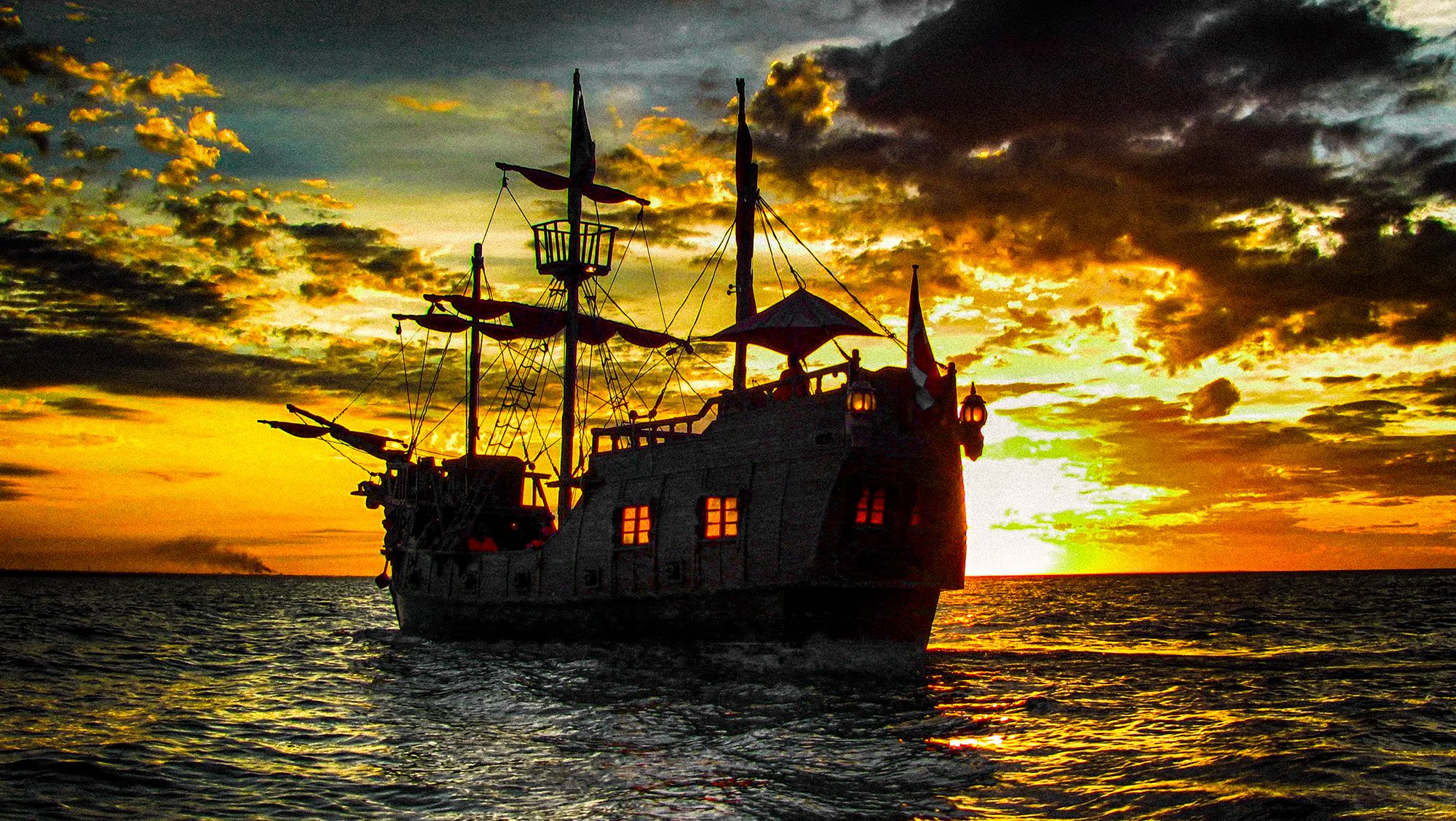
If you're planning on spending your vacation in Jamaica, you'll be happy to know that some of the best all-inclusive resorts in Jamaica are near popular pirate attractions. This can make it a whole lot easier to set up tours to these areas. At Beaches Resorts, kids can join in on the pirate fun thanks to the on-property Pirates Island Waterpark. They can have fun being pirates for the day on every day of their amazing Caribbean getaway!
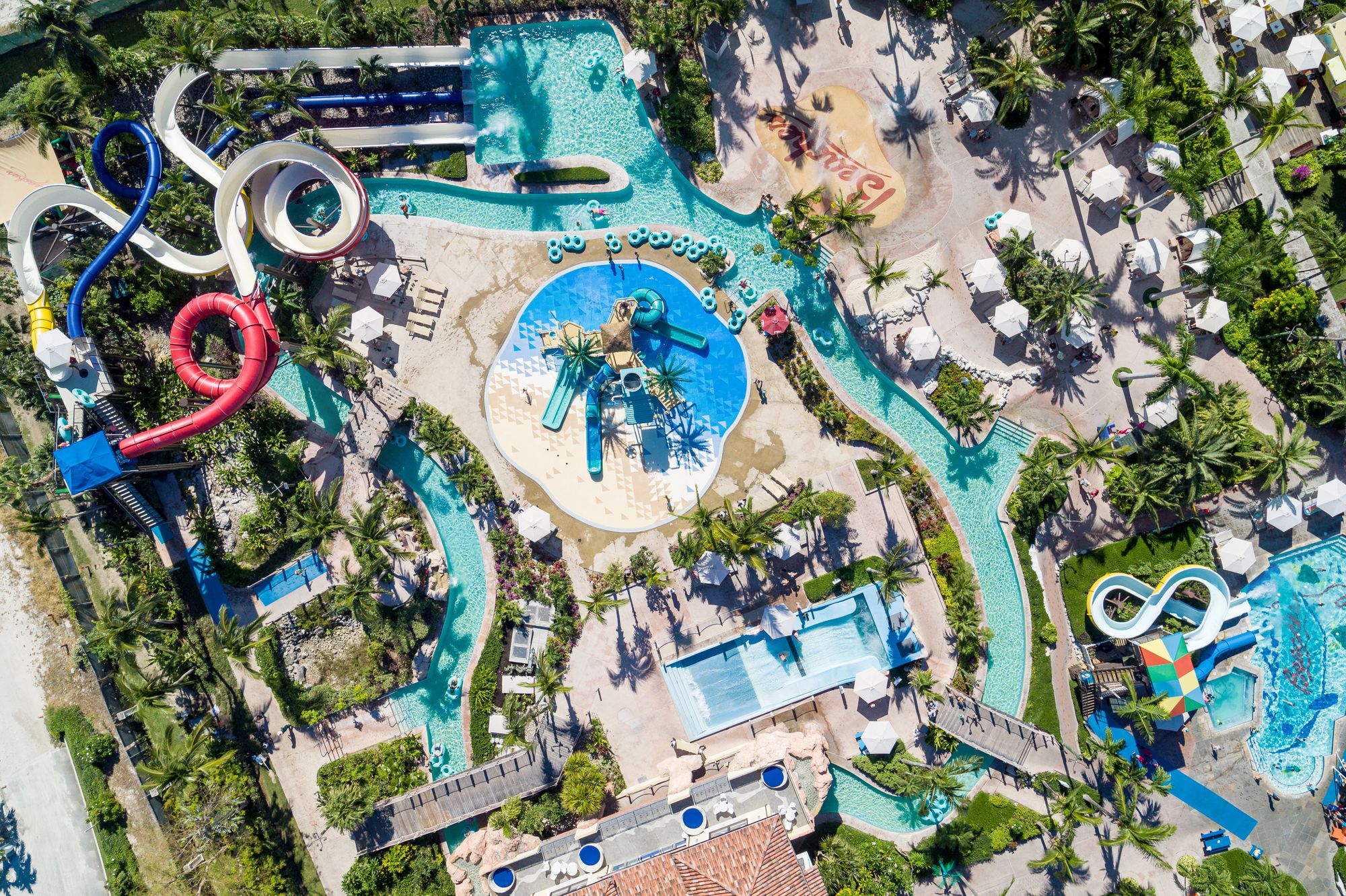
Picture: There's lots of things the Caribbean is known for besides its pirate history. This includes gorgeous waterfalls, stunning beaches, and the all-inclusive Beaches Resorts (Beaches Turks & Caicos and Beaches Resorts in Jamaica) where access to the Pirates Island Water Park is included with your stay!

